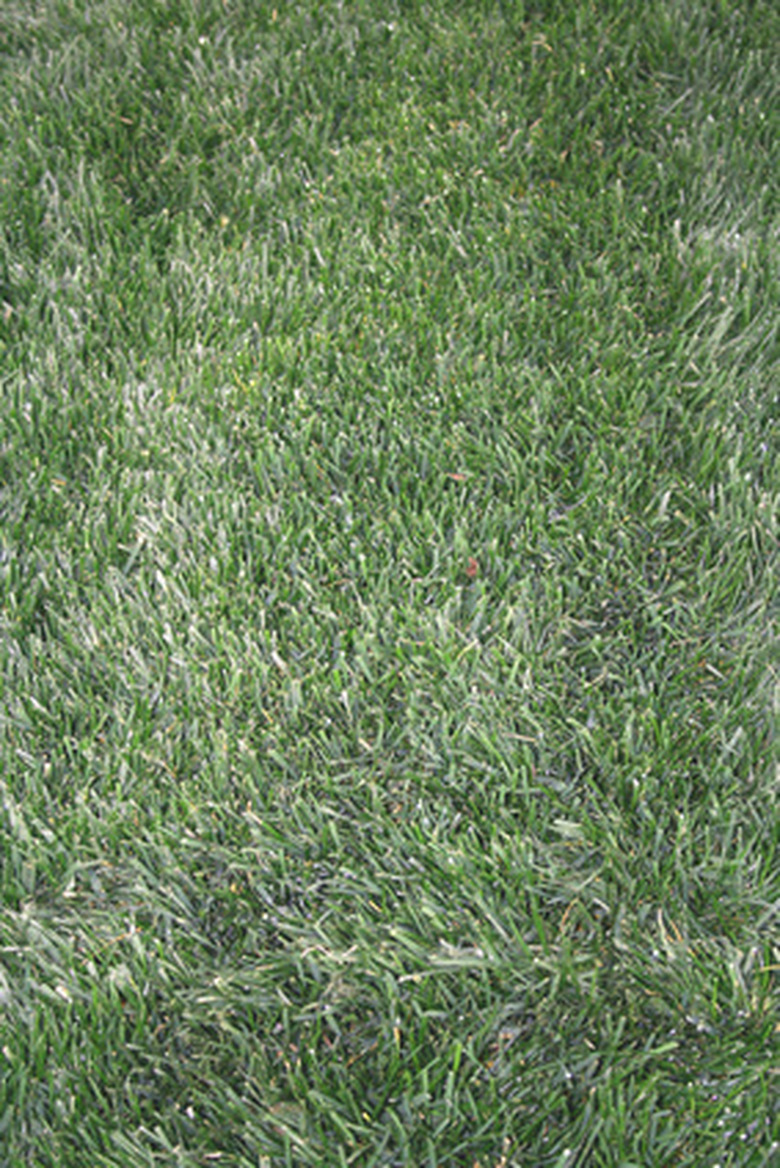How To Lay Sod Without Rototilling
Things Needed
- Shovel
- Peat or well-rotted manure
- Garden rake
- Lawn sprinklers
- Garden hose
- Sod
- Tape measure
- Utility knife
- Starter fertilizer
- Broadcast spreader
- Coffee cans
- Lawn mower
When starting a lawn or repairing damaged spots, laying sod is a quick shortcut to achieving an established lawn in a short period. Unlike seeding, you do not have to wait for the grass seed to germinate and thicken up before using the lawn. To lay sod, you'll need freshly-prepared soil, which usually requires tilling. This enables the sod to quickly root into the soil. However, if the area you need to sod is small, you should be able to work the soil over manually and skip using a rototiller.
Step 1
Remove existing weeds, grass, rocks and other debris from the area.
Step 2
Loosen the soil by turning it over with a shovel to a depth of 6 inches. Mix in 1 to 2 inches of organic material like peat or well-rotted manure. Use equal amounts of each and mix into the top 6 inches of soil.
- When starting a lawn or repairing damaged spots, laying sod is a quick shortcut to achieving an established lawn in a short period.
- However, if the area you need to sod is small, you should be able to work the soil over manually and skip using a rototiller.
Step 3
Break up any clumps of soil and rake the area smooth with a garden rake.
Step 4
Water the surface of the prepared area lightly right before laying the sod. This will help with the sod's survivability.
Step 5
Unroll the sod over the area. Stagger the seams like bricks on a house. Keep the seams of the sod tight. Use a utility knife to cut smaller pieces of sod as needed.
- Break up any clumps of soil and rake the area smooth with a garden rake.
- Use a utility knife to cut smaller pieces of sod as needed.
Step 6
Apply a starter fertilizer at a rate of 1 lb. of nitrogen per 1,000 square feet. Use a broadcast spreader to evenly distribute it and follow manufacturer's guidelines for spreader settings.
Step 7
Water the sod so it receives 1 inch of water every two to three days. Measure the amount of water applied by using coffee cans placed around the sodded area. Each can should receive 1 inch of water within it.
Step 8
Reduce irrigation to 1 inch of water every four to seven days once the sod has rooted into the soil. This should take one to three weeks. The sod is rooted when you can no longer lift a corner of the sod up off the ground.
- Apply a starter fertilizer at a rate of 1 lb.
- Reduce irrigation to 1 inch of water every four to seven days once the sod has rooted into the soil.
Step 9
Mow the sod every four to seven days at a height of 2 inches. Do not remove more than 1/3 of the grass blade at each mowing.
Tip
Adjust the watering frequency if the soil dries out exceptionally fast or stays soggy. Aim to keep the soil consistently moist. If you cannot prevent large gaps between the sod, fill the gaps with topsoil and the sod will slowly spread to cover these gaps.
